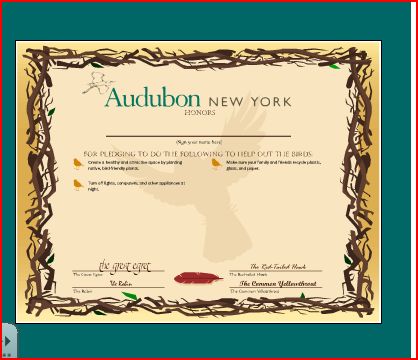I played the migration game and go through the levels. It seemed to me that quickness and manual dexterity with a mouse and a keyboard were the primary skills that were developed by this game. The content related to birds seemed pasted on to the game. The mechanics of the game could have involved fighter pilots on a bombing mission avoiding hazards and hitting specified targets. I think students could almost ignore the underlying content in their focus on beating the game; for me the content became a secondary concern. I suppose I picked up (or in my case refreshed) some knowledge about birds, pesticides and habitats. However, the structure of the game focused on the decision making and skill of the birds; the environmental factors (that people can impact in the world) were fixed. To me there seemed to be a mismatch between the stated goal of the game (people's everyday choices), and the choices players made in the game in the role of bird.
I played the game on my PC, and maybe I am getting old, but the presentation seemed a bit small for my aging eyes. I had a little trouble figuring out what I was supposed to do in the second game, but got it after a few tries. Of course this minor frustration had no educational value, because it distracted me from the underlying environmental issues and got me focused on figuring out how I had misinterpreted the instructions.
Essential Questions/Issues that occur to me:
1. What are the keys to developing games that effectively promote underlying content as opposed to merely reinforcing manual dexterity and quickness?
2. To me, the certificate seemed a bit cheesy and soliciting promises to change behavior seemed a bit manipulative, particularly in light of the relatively light educational component of the game. Are there better ways to do this? Could the promise making feature of this activity be inappropriate when included with less admirable causes?

I played the game on my PC, and maybe I am getting old, but the presentation seemed a bit small for my aging eyes. I had a little trouble figuring out what I was supposed to do in the second game, but got it after a few tries. Of course this minor frustration had no educational value, because it distracted me from the underlying environmental issues and got me focused on figuring out how I had misinterpreted the instructions.
Essential Questions/Issues that occur to me:
1. What are the keys to developing games that effectively promote underlying content as opposed to merely reinforcing manual dexterity and quickness?
2. To me, the certificate seemed a bit cheesy and soliciting promises to change behavior seemed a bit manipulative, particularly in light of the relatively light educational component of the game. Are there better ways to do this? Could the promise making feature of this activity be inappropriate when included with less admirable causes?